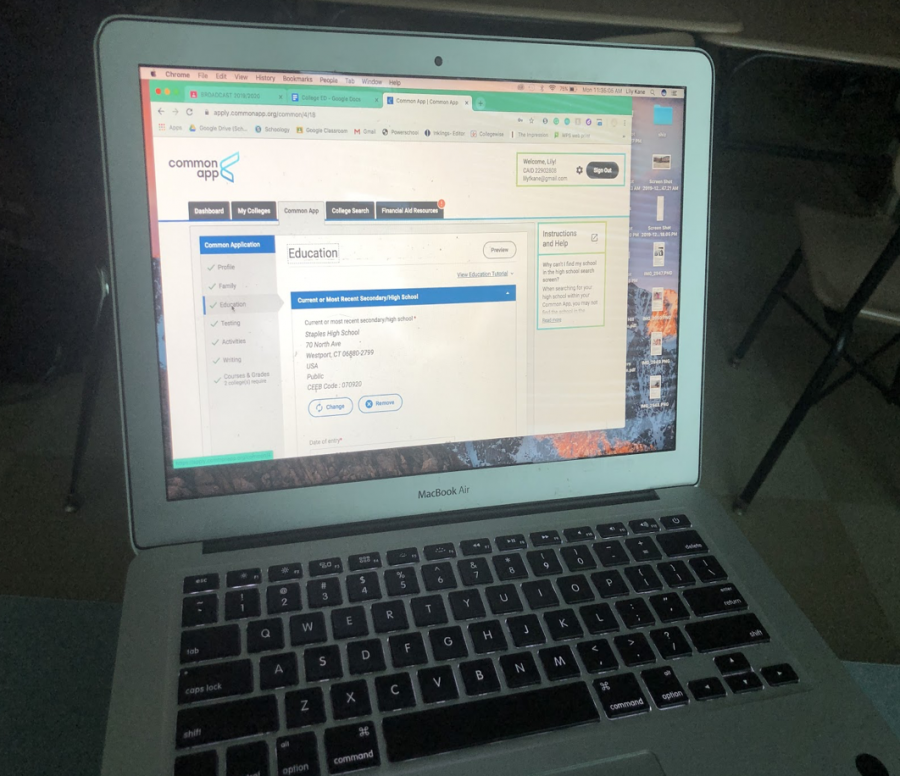Early Decision application outcomes create too much stress for seniors
Many students apply to their schools through the common application, a software that helps distinguish which applications are early decision (ED) and which are early admission (EA). Applicants are only allowed to apply to one ED school, but can often times also apply EA elsewhere.
As a senior in high school, it is virtually impossible for me to escape the ever-increasing stress of the college process until I am in a school I’m happy with. For many seniors in my same position, these two weeks of mid-December are perhaps the most stressful of the entire year. With early decision results coming out daily from various schools, the senior section of the cafeteria seems abuzz with nerves and tension.
Having already heard back from my ED school, and not getting in, I can attest to the stress that comes along with waiting for the results, yet in truth, it is not worth it. Early decision applications are binding, meaning that an applicant who is accepted ED to a college must attend. Essentially, this means that once a student is accepted into their ED, they are done with the college process. This is the motivator behind many students’ decision to apply as an early decision applicant, and it also contributes to the pressure of the final waiting period. The closer you get to possibly being done with the seemingly never-ending, tiresome process, the more you crave that acceptance and breath of relief.
Obsessing over that one ‘top school’ is hard to stop once you’ve started, but in order to stay sane, students have to step back and realize that no matter what, they will end up where they are meant to be. The process is truly almost over. Whether it ends over the next couple of weeks, or the next few months, it is coming to an end.
So far, it seems to me that the process of early decision applications really tends to favor students with athletic commitments, and those whose parents have attended the school they are applying to. When it comes to athletics, at schools as competitive as Princeton, approximately 250 athletes receive Likely Letters, with 150 Likely Letters going to non-athletes. This means that out of the 726 students accepted Early Action, approximately 400 of them were already sure of their admission according to Tier One Athletics.
Not only are athletes much more likely to be admitted in this early process, but being a legacy tends to play a huge role as well. At the University of Virginia, students who are legacies tend to be admitted at almost twice the rate of non-legacies, according to The Cavalier Daily. Clearly, the data shows that even with an early decision option for admission at many of these highly popular competitive schools, it truly is not worth the stress and pressure it creates.
The day I heard back was one of the most stressful days of my life. I couldn’t kick the debilitating stomach ache and I felt hot and shaky all morning. All of this for a rejection is too much. After not getting in, I realize that it is for the best, and the stress I felt was completely unneeded. The culture around early decision applications has grown so tense that people are unable to focus on the other schools on their list. As a way of coping with the stress, I tried to think about the other universities I had become excited about, and it honestly did help.
Now, having put the rejection behind me, I am looking forward to hearing back from the rest of my schools, and am beginning to understand that despite the reputation surrounding an early decision application, it is not essential. It can be hard to see other people get admitted to their first choice schools, but the year is not even halfway over, and I know I have so much time to figure out where I am meant to be.

Lily Kane ’20, a current Web News Editor on the Inklings Staff, looks to pursue journalism as her lifelong career. Craving another opportunity to express...


















































